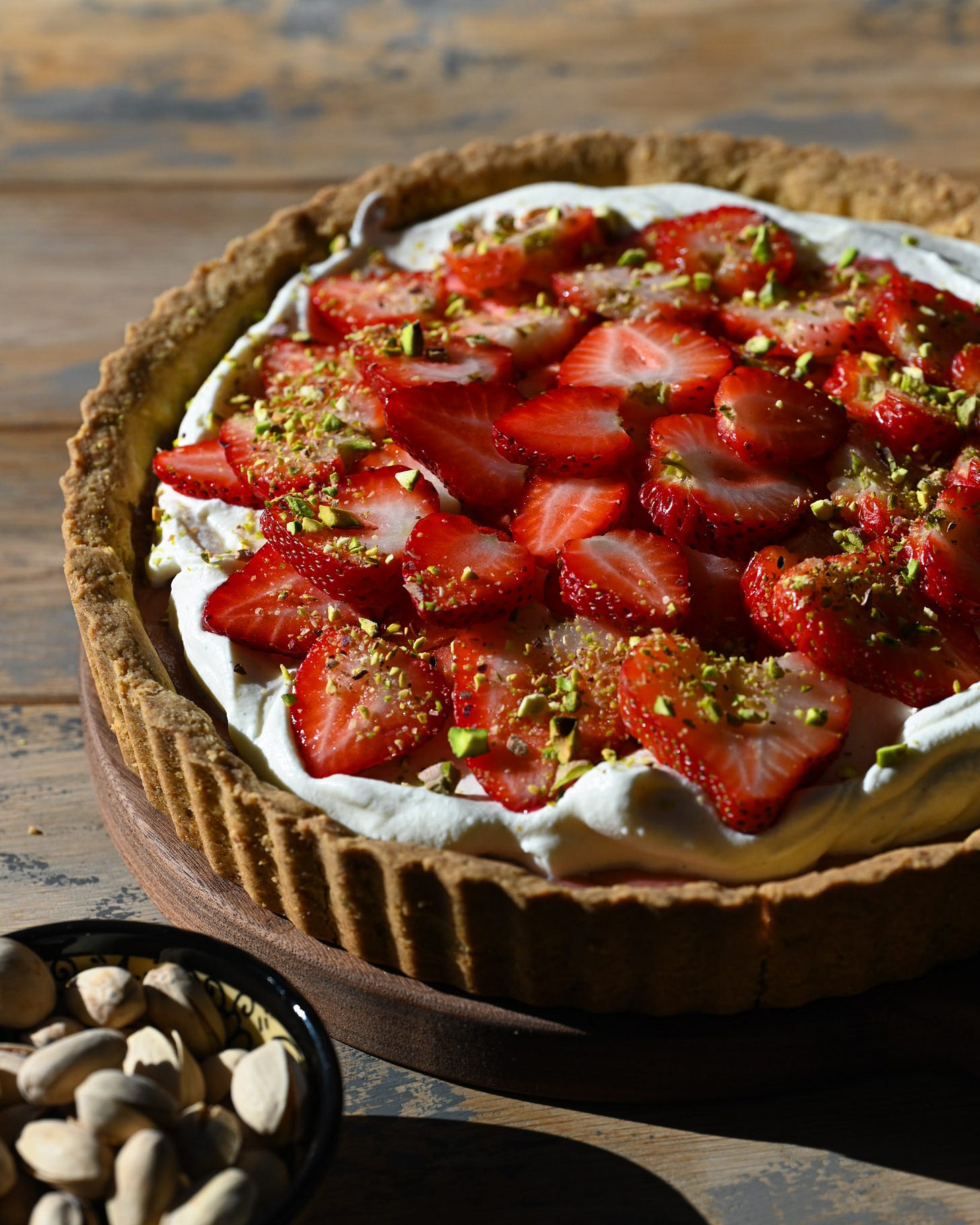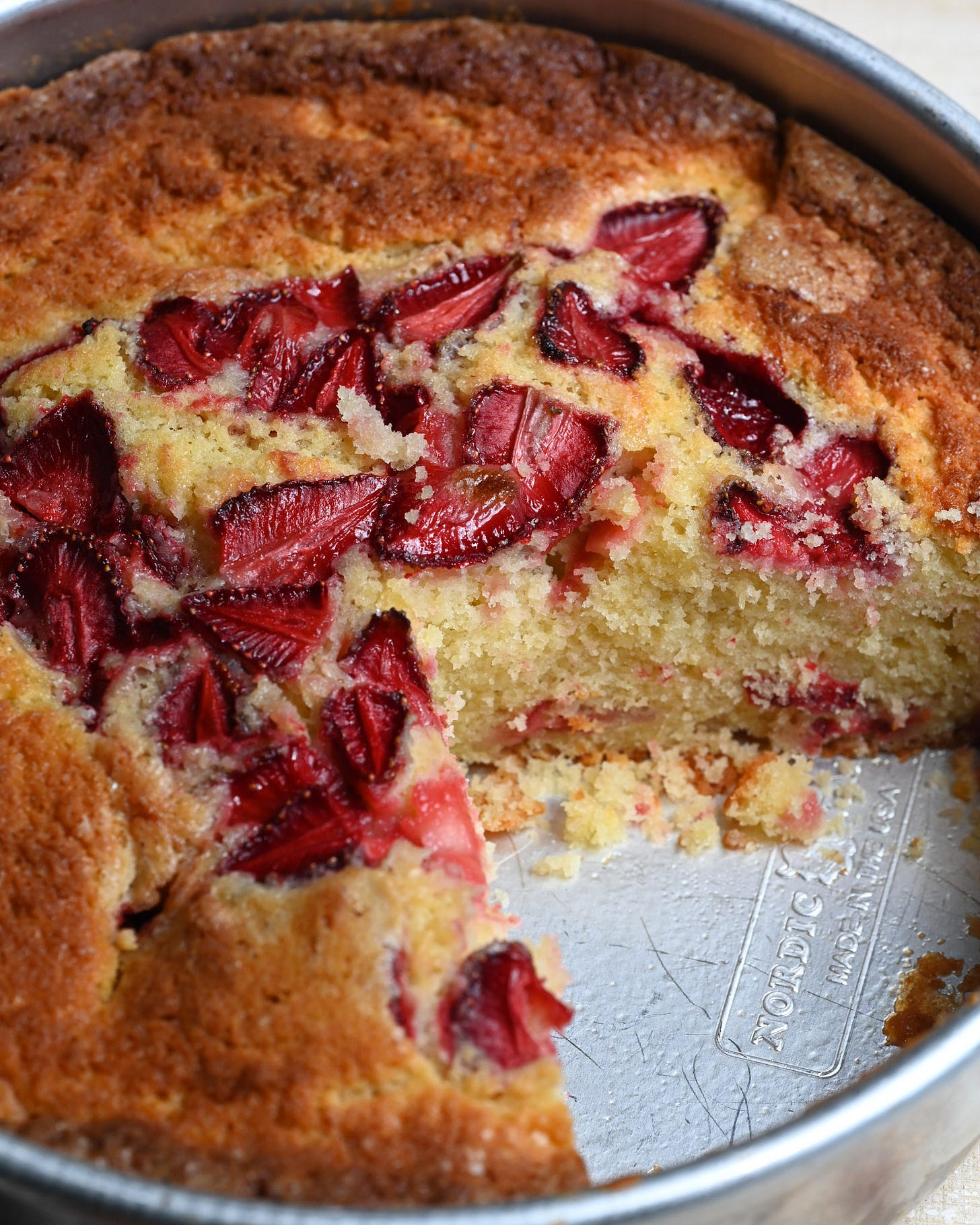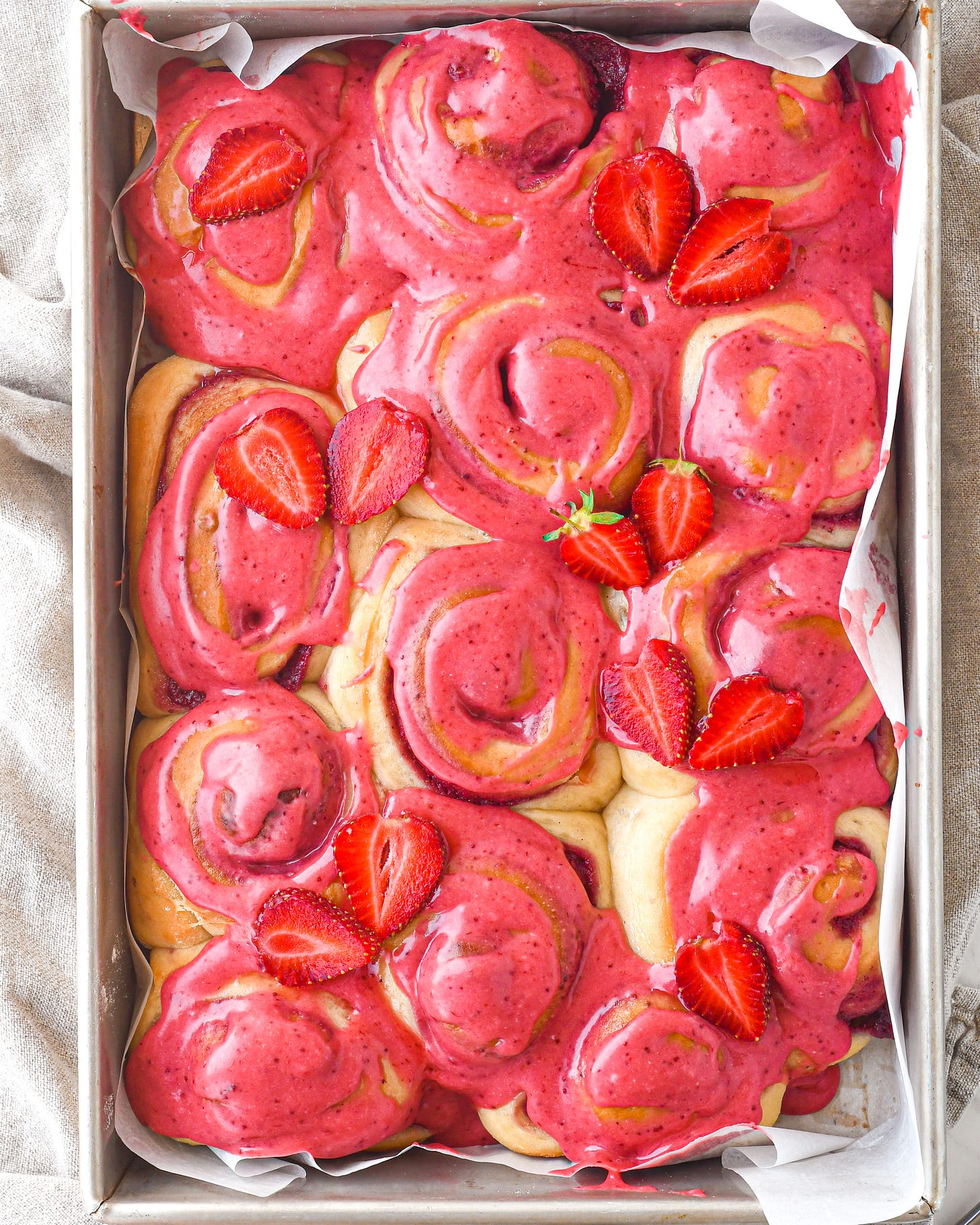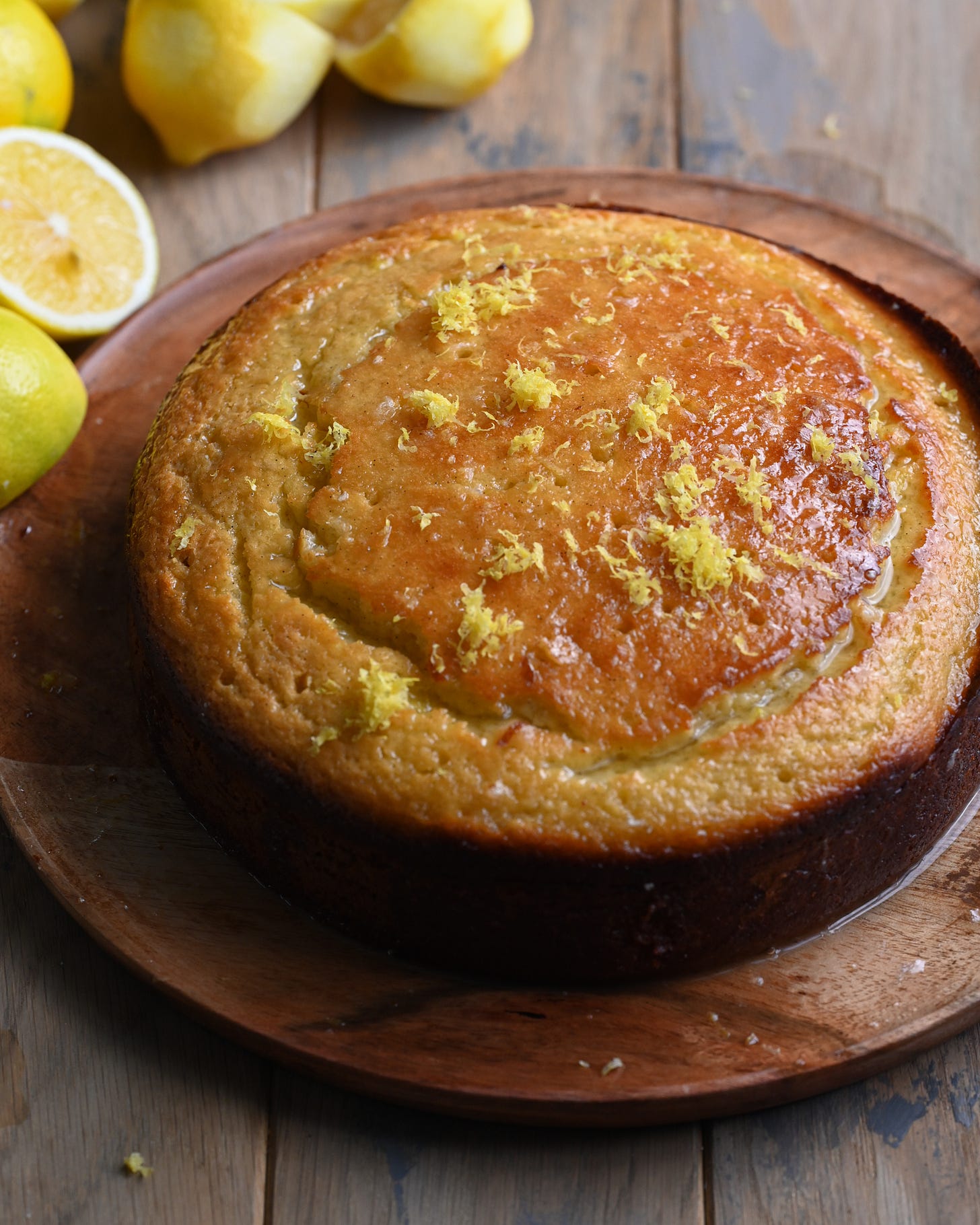new on bbs
Strawberry Curd
Bright strawberry curd made with just a handful of ingredients and perfect for using on pavlovas, cakes, and in pies and tarts!
also new (I wanted to give you something to do with the curd ;-) )
Strawberry Tart
A sweet and smooth strawberry tart housed in a tender pistachio lemon shortcrust, topped with a mass of creamy whipped cream, and layers of fresh sliced strawberries.
Simple Strawberry Cake
Fluffy and soft butter cake studded with two layers of strawberries: fresh and/or pre-cooked. This is a simple, quick and easy cake to whip up and perfect for those in season, super juicy red strawberries.
Strawberry Rolls
An intense strawberry filling, made from roasting the berries and mixing them with white chocolate, is surrounded by a super soft roll. The rolls are covered in a cream cheese strawberry icing.
From the (late) May Archives
2024: Baklava Cheesecake (the no bake version!)
2022: S’mores Pie (graham crust, chocolate ganache, toasted meringue)
2021: Homemade Peanut Butter Cup Stuffed Cookies (i get you to make the pb cup first ;p)
2020: Brown Butter Peanut Butter No Churn Ice Cream (i’m queen of too long recipe titles and it’s almost always bc of brown butter)
2019: Raspberry Cream Cheese Stuffed Scones (raspberry cream cheese mix baked into the center of a flaky scone)
2018: Four Citrus Layer Cake (the citrus obsession started early, lol)
a baker’s review
“This was delicious! I’ve made it 2 times now. The first time I followed the recipe exactly and did find it a little tart, but it was still good. My family enjoyed it. The second time I sub’d half the lemon rind with orange rind and half the lemon juice with orange juice (fresh squeezed from the oranges I used for the rind). This cut back on the tartness and gave it a slight twist in flavor. Both were delicious and incredibly moist. I just wanted to share the orange twist as an option for anyone concerned about the tartness.” Tia on Lemon Olive Oil Cake.
weekly reads
“Chocolate cake became the patriotic Blackout Cake after America’s entry into World War II. It was named for the mandatory Brooklyn blackouts that protected battleship and aircraft carrier assembly and 71,000 workers at the Brooklyn Navy Yard. The name stuck to chocolate cake even after the war. In the 1960s in the Deep South, pound cake was a cake of social justice and racial equality. Sales of it funded the 1956 Montgomery, Alabama bus boycott. The irony was that Black women had always been baking pound cakes and selling them, so their baking and making a statement went unnoticed. More recently, red velvet cakes have been linked to Juneteenth. The color red in this cake as well as hibiscus drinks, watermelon, and barbecue with sauce all symbolize the blood of the enslaved.” Strawberry Cake: What It Means Now - No. 333; Two years after a school shooting, I bake the cake I couldn’t bake then, Anne Byrn: Between the Layers.
“In contrast to mainstream media coverage that often portrays displaced people solely as recipients of aid, these reels offer a counternarrative. They present Palestinians not as passive victims but as agents of creativity and resistance. Cooking, normally coded as a domestic act, becomes political. It offers an alternative narrative to one of victimhood. It says: we are still here, we still cook, we still care. Through these everyday acts, people reassert identity, continuity, and connection in conditions designed to erase them. The message of resilience through food was powerfully underscored by the chosen settings in many videos. While displaced Gazans often selected what appeared to be a ‘nice’ place to cook, this typically meant a spot near a surviving tree, a powerful symbol of Palestine, or one decorated with a keffiyeh. Some framed their shots tightly to avoid capturing the surrounding devastation. In many instances, people returned to the rubble of their destroyed homes (these videos and research were published prior to the brief ceasefire in January 2025), retrieved what dishes they could, and baked sweets directly among the ruins. They shared coffee and pastries in the remnants of their kitchens. Sweets, often associated with comfort, celebration, and happiness, carried a deeper message when prepared among the ruins: we love being at home, even if it’s been destroyed.” Gaza “War Recipes”: Cooking as Survival and Resistance in Displacement, The Recipes Project.
a baker’s note: on curds
I’m always talking about my lemon curd and urging you to make it. I have used it in every baked good possible and thought today we might take a step back and talk about what a fruit curd actually is, how I came to my particular formula for developing fruit curd recipes, and most importantly: what you can and should do with it.
what is curd?
Its origins (and name) come from adding lemon to cream to acidulate it which produced the kind of curds we think of when it comes to dairy, it was used as a filling for tarts and sometimes even called ‘lemon cheese’. Over the decades and years “lemon curd” and its subsidiaries have evolved into much more.
I think of them as the fruit version of a custard: where a custard’s base is egg yolks, milk, and sugar; we use the juice from fruits to make a curd in lieu of the milk. Citrus curds are the popular with lemon being the most common: this makes sense when you think about how we want to, but can’t actually consume lemon directly (unless you have a very tartly tolerant jaw!). We make it more palatable by softening its sharpness with sugar and using eggs to thicken it, so it becomes something set and creamy that we can use as a spread, topping, or filling.
sam’s lemon curd that she won’t shut up about
When I first made lemon curd I followed Ina’s recipe but I wasn’t always happy with the result: because you skin the lemons (rather than zest), you’re more likely to get the white pith in and the curd will turn sour. But what I really protested to was her ratio of sugar to lemon juice: there’s three times as much sugar as lemon. It is very sweet and while I do love sweets (…lol) because it was lemon, I wanted it to be much sharper like the fruit itself.
I had come across this recipe for a french lemon tart (that pic is new. I distinctly remember seeing the full tart rather than just a slice) which had a 1:1 ratio of sugar to lemon juice. I made and LOVED it. The only thing? I didn’t want to separate four eggs. So I increased the egg, reduced the butter and… voila.
> Note: many curd recipes have you add the butter in with the eggs but I have you do it after; this is because of an article I read (which I cannot seem to find =( ) in which a chef recommended adding it slowly, after the cooking, so that it would be smoother. Can confirm, it is.
other curds she doesn’t shut up about
But let’s put lemon aside: you can make a curd out of almost any fruit and why shouldn’t you? Who wouldn’t want their favorite fruit turned into something they can eat with almost any dessert? Over the years I have shared raspberry, blackberry, blueberry, cranberry, and pomegranate (there’s also meyer lemon, and lime on the blog, and a grapefruit curd I shared on substack last year, but they are basically my lemon curd ;)).
When making a curd with other fruits, you can achieve that same spreadable consistency as lemon. Actually, because they contain natural pectin (the stuff used to make jams) berry based curds are usually thicker than lemon curd (do you see the waves in that bowl of strawberry curd, it looks like a milkshake!) though this doesn’t translate into setting firm in a pie without the addition of a starch.
But, all of those fruits I just named (save cranberry) have the best flavor when eaten as is, fresh (especially when they’re local and in season). When you make a fruit curd, the egg yolks will dull the color (I detest what they do to my beautiful pomegranate curd) and might make it taste, well, … eggy. Sugar sweetens in a way a fresh fruit absolutely doesn’t need, and butter is mainly there to make the texture silky smooth but you might taste it too if the balance isn’t right.
Often, we add fresh lemon juice to bring back the bright fruity flavor. If you add too much or your berries are utterly flavorless, the lemon might overpower (people like to yell at me for this and I have to say, um, your berries probably sucked, sorry!). But (and honestly kudos to you if you’re still reading) lemon isn’t always there just to enhance the flavor, the acidity helps thicken the curd so you need less yolks/starches (this I discovered when developing my orange curd recipe). The key to a good curd is getting a consistency that is usable (without adding too much starch that it becomes powdery), but also making sure that the base flavor really, really shines. And oh, it is a beautiful thing when you hit that perfect note.
ok sam, but what do I actually do with it?
The standard line answer for “what to do with lemon curd” is to suggest using it as a spread: put it on your crumpets! Pancakes! Scones! French toast! Etc. That’s what’s traditional, and it’s fine, I guess, but honestly I make curds all the time and have never spread it on any of those things (though I do suggest it to anyone who asks).
What I personally love to do is turn it into a crucial part of a baked good. I want to give you vehicles to consume it because when done right, it is heavenly: I might pour it over a shortbread crust or into a tart shell or a pie crust and bake it up (sometimes it sets, sometimes it doesn’t and you might need some more starch - that new strawberry tart won’t really set and I didn’t want it to, it’s a beautiful mess), maybe it isn’t the whole pie and it’s one layer of it like this; I might spread over layers of dough and roll it up like a cinnamon roll; I’ll use it as a stuffing for sugar cookies; or spread it over and bake it into a cheesecake, (by the way, you know my new rhubarb cheesecake? Instead of swirling the rhubarb jam into it, swirl in a curd!), or I’ll swirl it into ice cream. And of course (you probably already know this one), use it to fill a pavlova. Also, fill your macarons, cupcakes, croissants and donuts, cake layers, or in an icebox cake with all the curds.
—> Did you know? Although I often present the dish to you with one curd, almost all of my curds can be used interchangeably in any of those linked recipes =)
The list goes on (and I’ll keep adding to it as long as I’m doing this job ;-) ). But what I really want is for you to think of it not as something to just ‘be used’ or ‘use up’, but a way to flavor, a way to build a baked good around a fruit you absolutely love, and just want more and more of.
sam










I have been waiting for this recipe! So excited it just popped into my inbox!